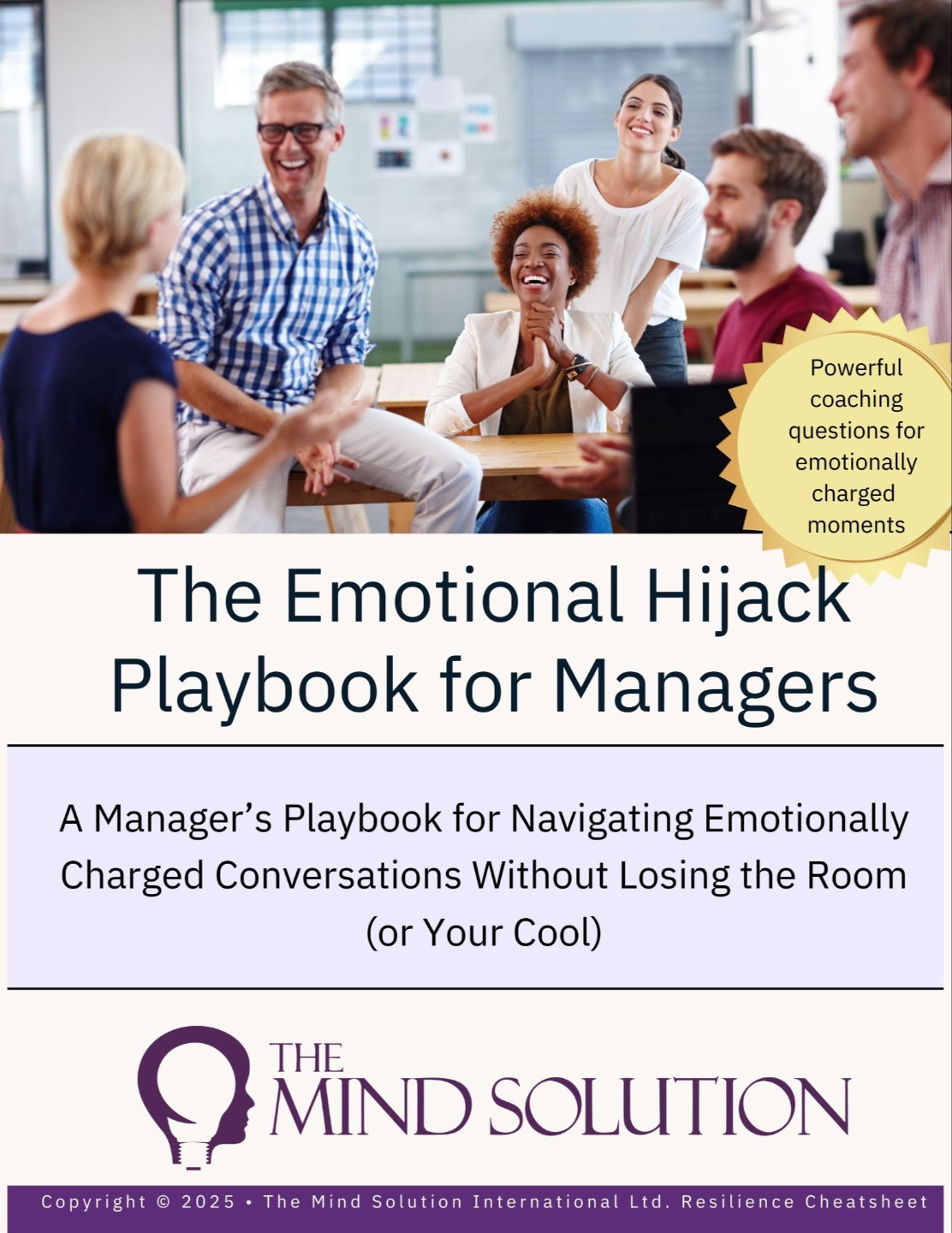Why Your Employee Wellbeing Strategy Isn't Working
Aug 13, 2025
Why talk about mental health at work?
Protecting and supporting the mental health of employees is no longer a nice-to-have but vital for the future of your business.
Lockdown, COVID-19, economic uncertainty, and social unrest have impacted employees immensely, with a rise in stress, burnout, PTSD (post-traumatic stress disorder), and substance abuse.
The pandemic has affected people’s mental health in different ways, and although we are 5 years on, we’re still witnessing the long-term impact on mental wellbeing.
As Brene Brown said:
“We are the most in-debt, obese, addicted and medicated adult cohort in U.S. history.”
That reality plays out in workplaces every single day, and is why HR cannot ignore the conversation.
What is mental health at work?
Mental health at work isn’t just the absence of mental illness. It’s the psychological, emotional, and social wellbeing of your people, how they think, feel, and behave, how they handle stress, and how connected and engaged they feel in their roles.
But here’s the problem: for many organisations, the “wellbeing strategy” is simply a collection of training courses or a wellbeing week. That’s not a strategy. That’s throwing jelly at the wall and hoping it sticks.
How to support mental health at work?
Here are the reasons why your wellbeing strategy isn’t working, and how to fix them.
1. No clear wellbeing strategy
For a workplace wellbeing plan to work, you need a strategy, a clear vision of what you’re trying to achieve and how you’ll measure success. A wellbeing strategy isn't a collection of wellbeing activities - those are your tactics or initiatives. Specific activities that are going to move the needle, deliver a specific result and commercial return on investment. Consider your wellbeing strategy the same way a company sets out its marketing strategy. Every social media post, launch, advert and so on has a clear ROI and a link back to the strategy.
Once you’ve defined your vision, you can map out the actions needed to achieve it.
2. Avoiding the numbers and key metrics
There’s less value in rolling out wellbeing initiatives if you can’t measure the return on investment. HR needs to get wise to the commercial landscape and show the financial, strategic, and operational returns of looking after people.
Ways you can measure ROI include:
-
Cost of absence
-
Number of days absent
-
Reduction in the number of accidents
-
Staff surveys
-
Number of long-term sick cases
-
Increase in sales
-
Reduction in the cost of private medical claims
-
Retention
Example: INK Communications used our wellbeing portal’s survey function to assess employees’ health, wellbeing, energy, stress, and mental health as part of launching the portal. This gave them a baseline to measure impact and tailor content.
3. Not getting the CEO involved in your wellbeing strategy
Building a wellbeing culture starts top down. Employees respond to leaders; you need your CEO to lead the change.
Example: Wood MacKenzie’s ex-CEO recorded a video about his personal experience of taking time off due to stress and anxiety. The response from employees was overwhelming, and many shared similar experiences with him. The more leaders show vulnerability, the more stigma breaks down.
4. Not making mental health training for managers compulsory
We have witnessed where organisations have made mental health training for managers compulsory and voluntary, and each time it's clear which approach has the most impact.
Example: Sofology rolled out mental health training to over 200 managers and made it mandatory. Their CEO, Sally Hopson, attended every session, engaging fully. This ensured consistent language and understanding across the business.
5. Treating wellbeing as another HR initiative
Without great communication, your wellbeing strategy risks being seen as “just another HR initiative' to employees. And that's the last thing we want for you!
To engage people, speak their language. Get your marketing team involved. Avoid jargon.
6. Relying on a wellbeing week
Wellbeing weeks aren’t bad, but what happens in the other 51 weeks of the year? Behaviour change requires repetition — the brain needs to hear something 7–15 times to create new neural pathways. Consistency is key.
7. Ignoring organisational culture
“This is a fast-paced environment” is something we hear all the time. But is it just code for “we don’t have enough resources” or “people are at risk of burnout”? No wellbeing initiative will succeed if the culture itself is causing harm.
Conclusion
The truth is, there’s no shortcut to creating a workplace where mental health and wellbeing genuinely thrive. It’s not about ticking a box, running a one-off event, or hoping a handful of managers “get it.”
It’s about embedding wellbeing into the DNA of your organisation so that every decision, every conversation, and every policy reflects the value you place on your people.
When you get it right, the impact is felt everywhere in the way your employees show up, in the energy they bring to their work, and in the loyalty they feel towards the business. And that’s not just good for people. It’s good for the bottom line.
So the question is, are you ready to stop hoping that your wellbeing initiatives work and start building a wellbeing culture that works?
Ready to Create a Wellbeing Strategy That Delivers Results?
If you’re ready to create a wellbeing strategy that doesn’t just tick boxes but changes lives — and delivers measurable business results — we can help. With over 20 years’ hands-on experience blending HR expertise with mental health training, we’ll guide you to create the right approach for your people and culture. Schedule Your Call Now.
The Emotional Hijack Playbook For Managers
A Manager’s Free Resource for Navigating Emotionally Charged Conversations Without Losing the Room (or Your Cool).
Perfect to use in your next one-to-one.







